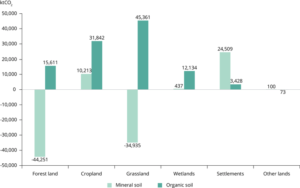The European Environmental Agency (EEA) published a briefing presenting the information on soil carbon that can be extracted from the 2021 national greenhouse gas inventories, as reported by EU Member States for the year 2019.
A greenhouse gas inventory for land use includes emissions and removals of greenhouse gases due to changes in carbon pools, including carbon stored in living biomass. The publication also provides an overview on the status of soil carbon pools across Europe. EEA’s main findings show that, overall, EU soils are losing carbon as CO2 emissions, with cultivation and drainage of organic soils being the major responsible for these emissions.

According to data, mineral soils account for the 92.1% of areas in Europe, while managed organic soils represent only the 4.2%, with the rest being unmanaged organic soil. Based on the inventories, six Member States do not have organic soils, which occur mainly in northern Europe where the colder and wetter climate favours the build-up of carbon in soil. The main land use category applied to organic soil is forest land, followed by grassland and cropland which are also the categories which generally have higher GHG emissions per hectare (with the exception of peat extraction). Finally, the report states that differences in soil management play a big role in the impact on the gain and loss of carbon, with important implications for achieving EU environment policies.
You can access the EEA briefing here.
